KNIFE IN THE WATER. Roman Polanski Astonishing Debut
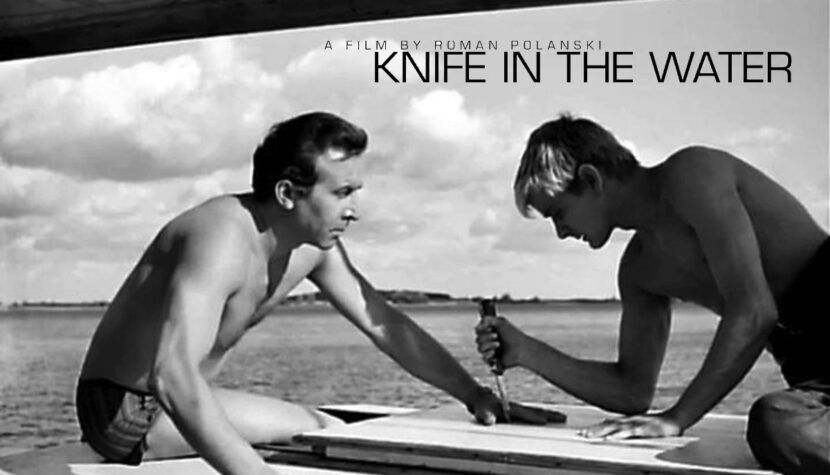
The young filmmaker, barely thirty years old, already had several short films and student projects to his name, such as the famous Two Men and a Wardrobe, the surprising The Fat and the Lean, and the allegorical When Angels Fall. Polanski’s feature debut, which was shot in the Masurian Lake District in mid-1961 and hit cinema screens in early spring the following year, unexpectedly opened the doors to an international career for the young creator.
Polanski recalled the beginnings of his work on Knife in the Water:
As a full-fledged member of the ‘Kamera’ team, I was increasingly eager to make my own feature film… I wanted my first feature to be cool, cerebral, calculated, constructed precisely, almost formalistically. It was supposed to resemble a classic thriller… So, I signed my first contract with Kamera… we started working, but we didn’t get very far… then Jerzy Skolimowski entered the scene, full of ideas and stimulating us.
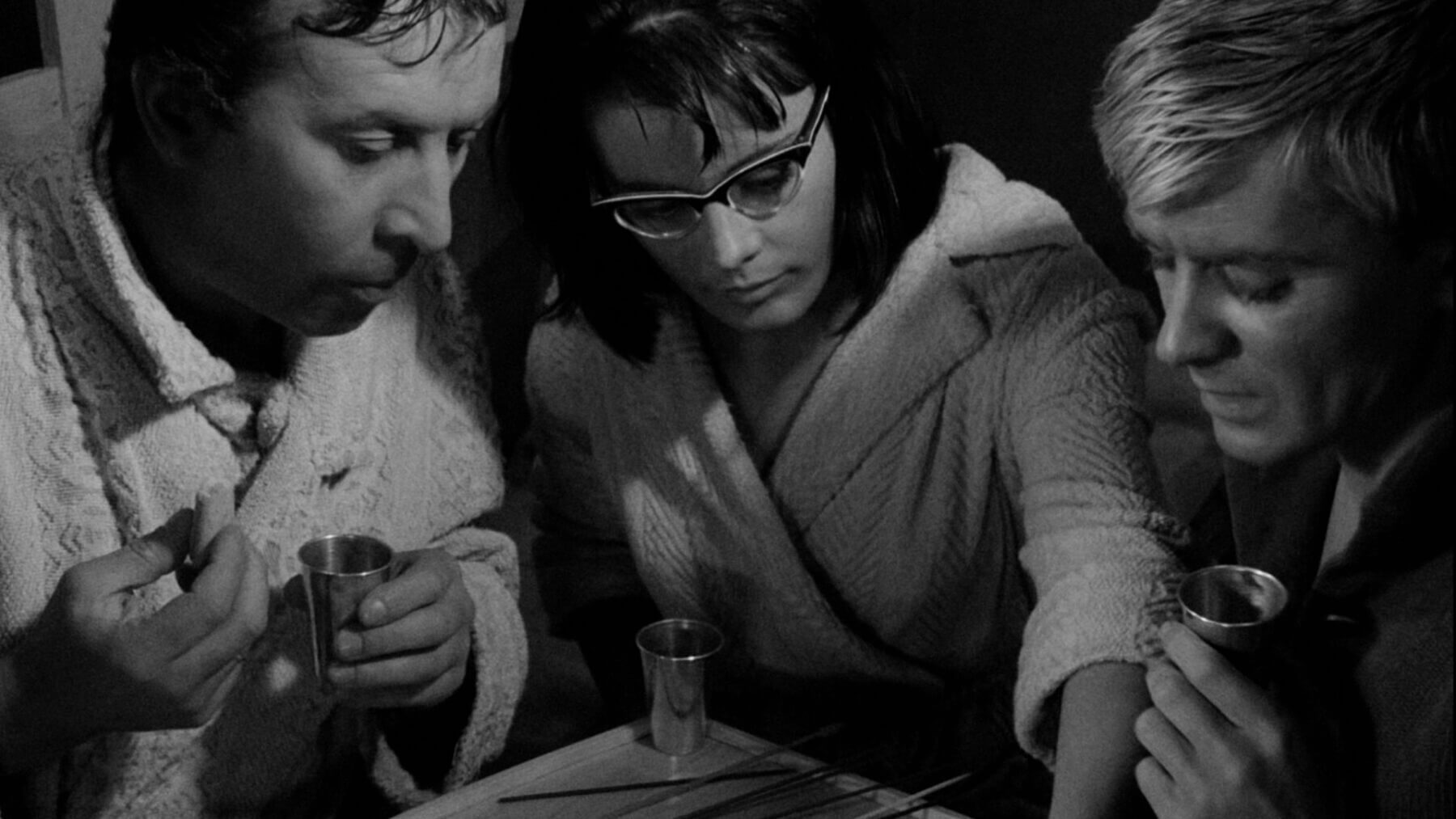
The script was almost ready, but there were still no funds to produce the film. During a stay in France, where the director’s first wife, Barbara Lass, was pursuing an acting career, the Ministry of Culture granted a modest budget for the production of Knife in the Water, so Polanski returned to Łódź, where preparations for the film began. Knife in the Water features only three characters: Andrzej (Leon Niemczyk), an unnamed young man (Zygmunt Malanowicz), and Krystyna (Jolanta Umecka). Niemczyk was the only experienced actor in this trio. Malanowicz was fresh out of acting school, while Umecka was an amateur whom the director met at a swimming pool.
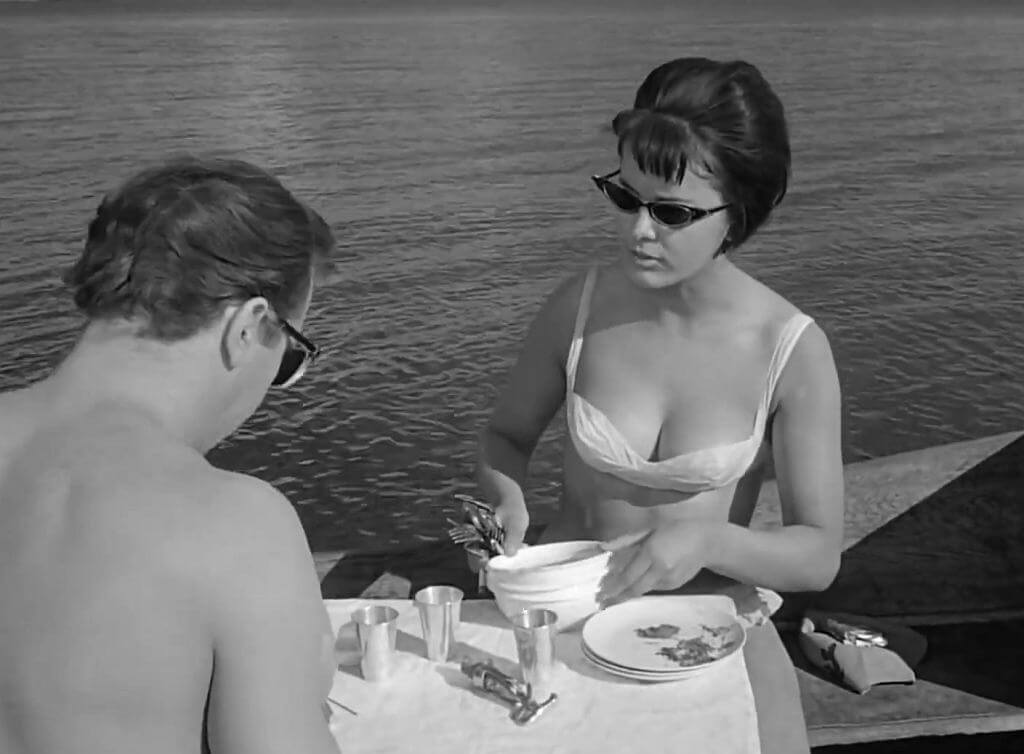
The plot revolves around a Sunday outing by a married couple to the lake and their encounter with a young hitchhiker. Andrzej and Krystyna are a well-to-do couple bored with life and marriage. Intrigued by the behavior of the rebellious young man, they invite him to join them for a day of sailing on the Masurian lakes.

In one of Polanski’s biographies, it reads:
Almost all the scenes were shot on a ten-meter sailboat, too small to set up a camera tripod. Working with excellent cinematographer Jerzy Lipman, Polanski commanded the entire studio on the water – a raft on which the camera stood, an electricians’ boat, and several motorboats for towing and transport. Lipman had to climb to the top of the mast from time to time to capture the atmospheric landscapes that the young director demanded. Once, an excited Polanski called up to Lipman to check how the shots were going. An enraged Lipman shouted back, ‘It’s fucking beautiful!’ and accidentally dropped the camera into the water, never to be found again…
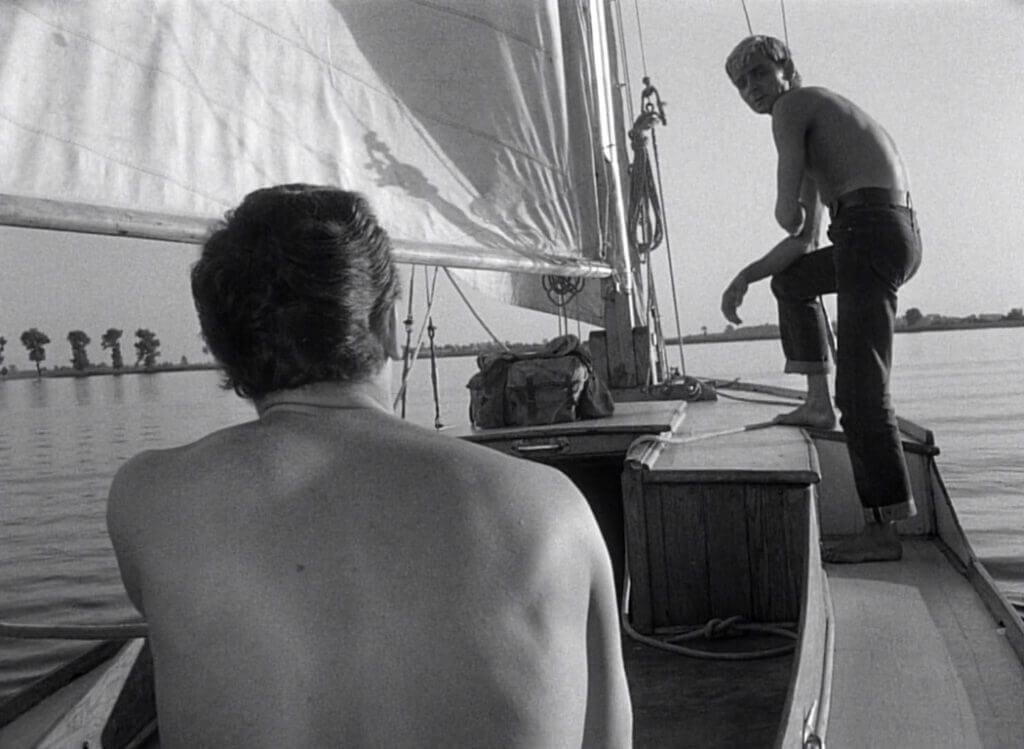
This story perfectly captures the atmosphere on set. During filming, the entire crew lived on a barge. Unstable weather did not favor the work. Jolanta Umecka barely coped with the ambitious acting task set by the young director. Years later, Polanski recalled and critically assessed her engagement and talent, or rather the lack thereof, in the role of Krystyna. The authorities almost halted the film’s production when false rumors spread that Polanski was shooting daring erotic scenes and that the film crew was living in luxury and having a great time.
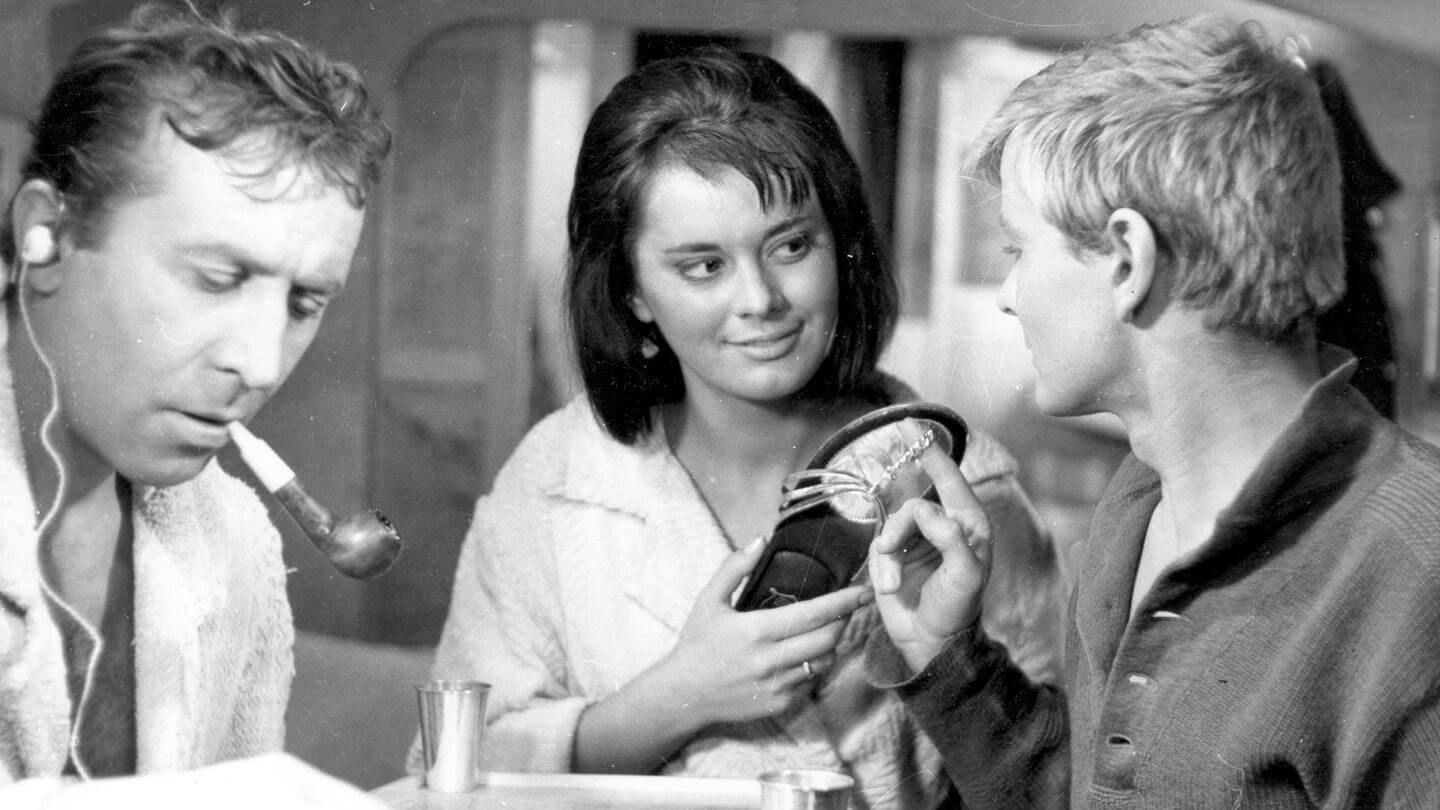
Knife in the Water seems to be a perfect example of how two antithetical forces – luck and misfortune – clash in Polanski’s life and work. There’s an anecdote in the film world that during the first screening of Knife in the Water, organized to present the film to the head of the ‘Kamera’ film team, Jerzy Bossak, a technical failure occurred after a few minutes of the screening. Polanski asked the technician, who claimed that fixing the problem would take several hours, to continue with a silent screening. The director recited all the dialogues of the three characters in the film, and Bossak congratulated him not only on his excellent memory but also on the great impression that this unusual screening made on him. Polanski owed this perfect knowledge of his own work to his perfectionism and the method of script creation he developed at the time. “After sketching out a scene, we began acting it out, repeatedly swapping roles. Since there were only two of us for three roles, we each became different characters in turn,” recalled Jerzy Skolimowski, co-author of the script and dialogues. It should also be noted that the dialogues were dubbed in the studio. The voice of the young man in the film is actually Polanski’s, not the actor Zygmunt Malanowicz’s. The same goes for the character of Krystyna, whose voice was provided by actress Anna Ciepielewska.
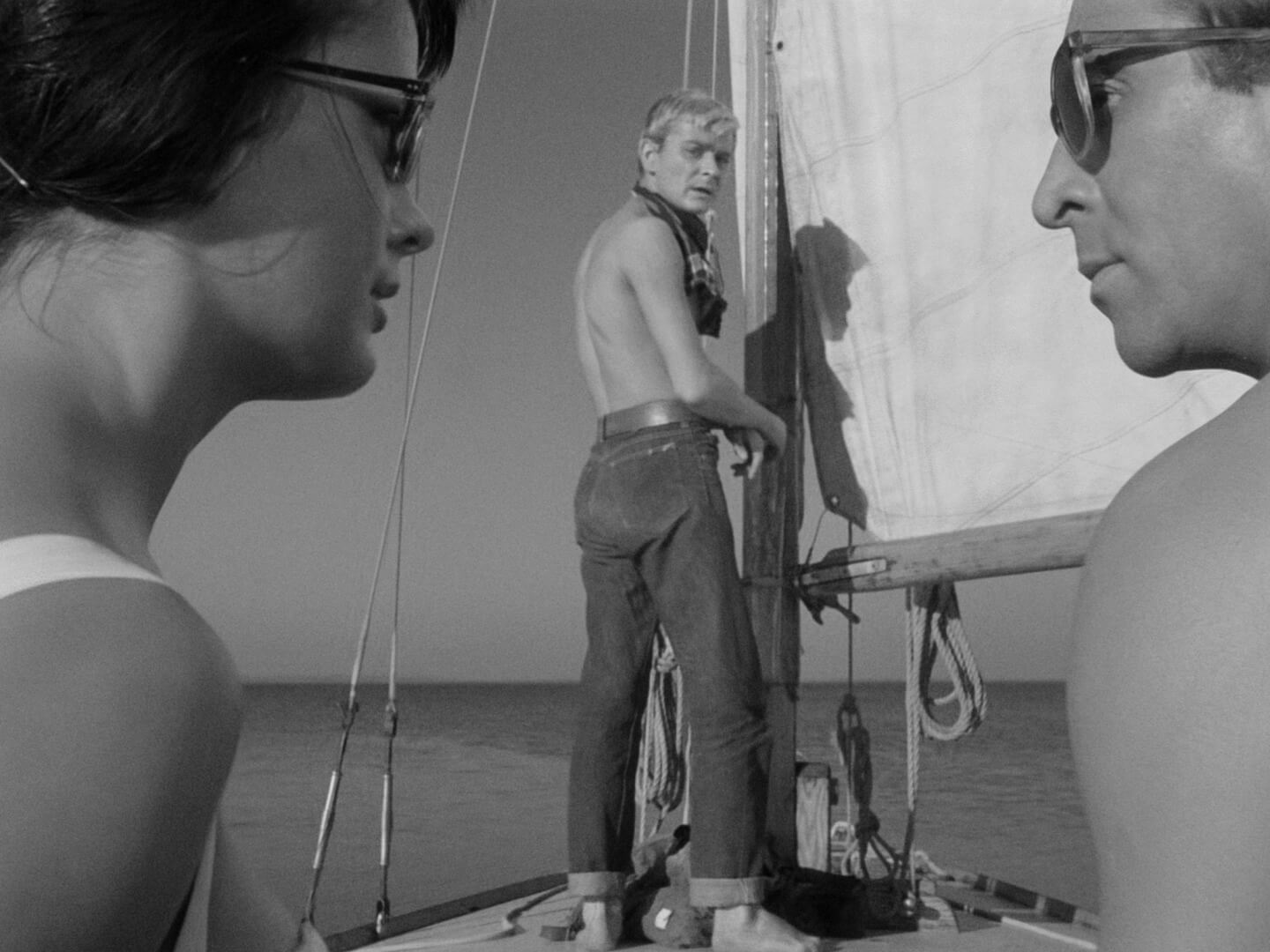
The pre-release screening of Knife in the Water organized for the press also turned out to be unlucky. Today, the film is considered an antithesis to communist propaganda and its veiled criticism. Immediately after the press screening, journalists declared it a worthless film, insignificant for communist society and its values, and said it had nothing to say about the condition of contemporary man (sic!). The then General Secretary of the Communist Party, Władysław Gomułka, was reportedly so irritated by Polanski’s work that he allegedly threw an ashtray at the screen. Knife in the Water hit cinemas without a grand premiere and without much publicity but was pulled from the repertoire after just two weeks. This is the first and only film Polanski made in Poland (though The Pianist was partially shot in Warsaw, studio scenes were filmed in Germany), and soon he left his homeland to create in more favorable, unrestricted artistic freedom conditions.

However, luck smiled on Polanski when Knife in the Water was noticed abroad. The work of the bold and uncompromising debutant was “burned” in his homeland but appreciated in the West. The film won the Critics’ Prize at the 1962 Venice Film Festival and was subsequently nominated for an Oscar. This was the first Oscar nomination for a Polish film in the history of this prestigious award. Knife in the Water did not win the award but was still regarded as one of the best films of the year. Polanski lost to Fellini with 8½, which he commented on: “Losing to such an opponent is no shame!”

In September 1963, the New York Film Festival presented Knife in the Water. Not only was it the only film from Eastern Europe admitted to the festival, but it also achieved great artistic success, pleasing both critics and audiences. Polanski and his film debut became a sensation. The crowning achievement was the cover of Time magazine. On September 20, 1963, the weekly featured a photo from Knife in the Water on its cover, with the now-famous caption: “Lovers in a Polish Film.” This was an honor that no filmmaker from behind the Iron Curtain could have dreamed of.
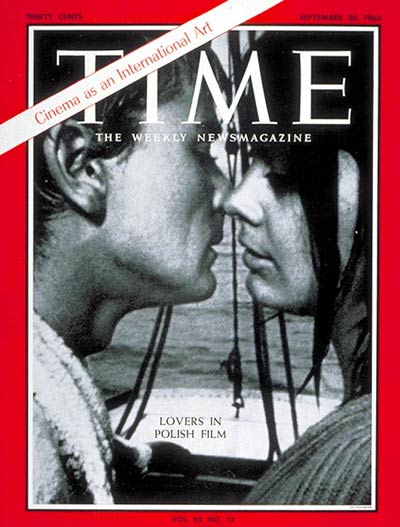 |
Given the limited resources available to the film crew, Knife in the Water is an outstanding film. It is a well-composed, ambiguous, tension-filled story about a love triangle, sophisticated games, and rivalry between youth and maturity, between man and woman. It’s a psychodrama that takes place within a single day in an isolated location with just three characters. The oppressive atmosphere is felt from the first scene when the quarreling couple in an elegant car almost run over a hitchhiker… Jerzy Lipman is responsible for the film’s cinematography, but Polanski actively participated in the camera work, suggesting unconventional solutions. The collaboration between the two filmmakers resulted in unique shots and frames, such as the one during Andrzej’s allegorical story about an overconfident sailor jumping onto bottles. In the foreground, we see part of the young man’s head and ear, and in the background, yet at the same time at the center of the frame, we see Niemczyk’s character from the perspective of the younger, uninterested, (non-)listening protagonist. The film is complemented by very expressive, tension-building music by Krzysztof Komeda, who later regularly collaborated with Polanski until his tragic death in 1969.
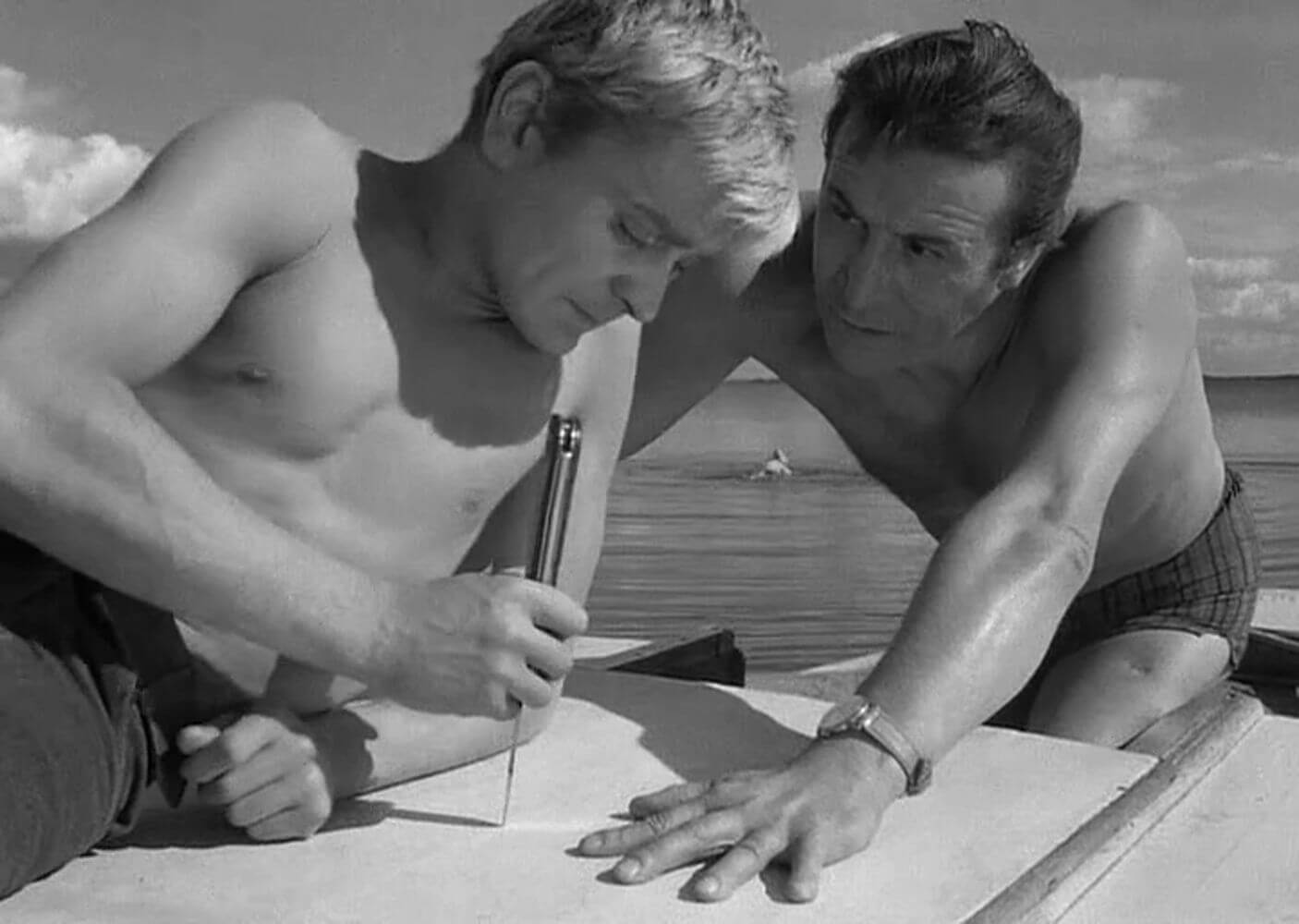
Knife in the Water is now part of the canon of not only Polish but also world cinema. Roman Polanski remains an active filmmaker.

